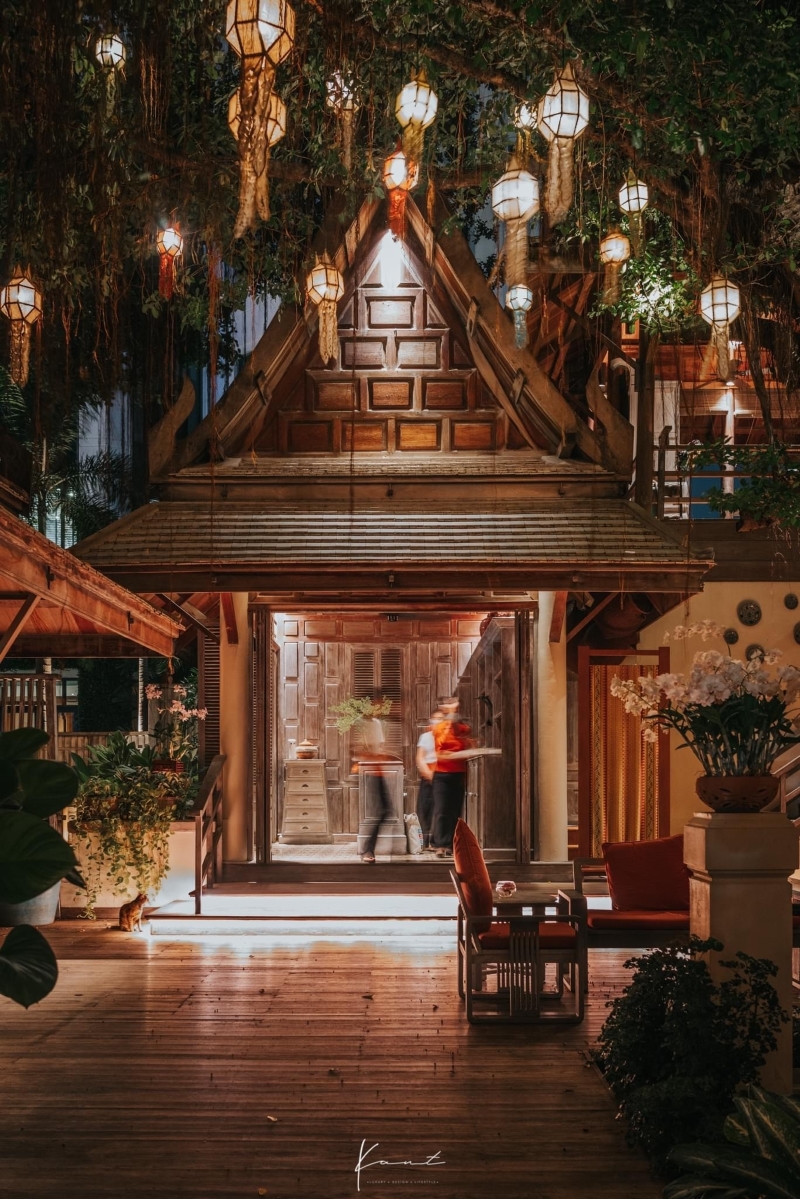A culinary exploration of Thailand debuts at The Peninsula Bangkok
While rice is cultivated on more than half of Thailand’s agricultural land, making it the world's second-largest exporter, its importance is rarely showcased on plates in Bangkok. Though, in recent times, there have been a smattering of restaurants who have done their best to include a variety of Thai rice in their menus.

Photo courtesy of KANT - Luxury Design Lifestyle (fb.com/kant.co.th)
Taking it a step further is The Peninsula Bangkok’s Thai restaurant, Thiptara. Set alongside the majestic Chao Phraya River and surrounded by lush gardens, Thiptara has long enticed guests with its alfresco ambience and traditional Thai cuisine. The riverside restaurant has introduced a “Thai Rice Journey” menu, which lets diners sample flavours from eight different regions, along with eight different varieties of Thai rice.

The eight-course tasting menu is priced at B2,480++ per person until Sept 30, centres around Thailand’s most diverse and versatile ingredient. Created by Thiptara’s head chef Monnipa Rungthong, the journey includes dishes that highlight the distinctive rice varieties grown in Chiang Mai, Yasothon, Phatthalung, Chiang Rai, Surin, Ratchaburi, Tak and Roi Et. Many of these varieties are relatively unknown to those traversing Thailand and have stories behind them, as well as delectable flavours. Several have also been granted Geographical Indication status, meaning they are endemic to the provinces in which they are cultivated.
Begin the journey up North, in Chiang Mai, from were the Bue Ki strain of rice comes from. The starter of Khao tang yum polamai som saa features this short-grained rice, which has been grown for generations by the area’s indigenous mountain people. The rice is turned into a crispy black and white cracker and is served with a Thai mixed fruit salad and bitter orange.
From the Central-Northeastern province of Yasothon, made famous by Bangkok Post columnist Roger Crutchley in his column “PostScript”, the organic red jasmine rice is not only tasty but has health benefits because of its low-glycemic index. It comes from the unpolished aromatic whole grain with only husk is removed, retaining the red bran layer and germ, and once cooked it is sweet and nutty. In the Kanom krok khao khai-goong, a savoury “rice-pan” cake is made with coconut meat and topped with tobiko and kaffir lime gel.

A spicy puffed rice dish, Miang khao phog dok mai nua poo is made with Sung Yod rice, grown only in Phatthalung near the Ban Tad Mountains and Songkhla Lake. It has a distinctive reddish colour and high nutritional value. The dish comes with edible flowers, crab meat, chilli peppers and tamarind.

An Isan-style soup, Khao bue moo tun features braised pork shoulder, watercress and stock made from khao niew or sticky rice, which comes from Chiang Rai.

Kwao klong nua sawan or “heavenly roasted beef” uses Australian striploin jerky, crispy Vietnamese coriander and steamed brown Plab-plung rice. This is a fast-growing variety sometimes called “milky rice” from the Southern-Central province of Surin.
The Geang khao pan bai chaplu yang goong yai makes use of the popular riceberry distinctive to the western central region of Ratchaburi. This deep purple rice, a hybrid of two jasmine varieties, is prepared in a Southern-style curry with giant tiger prawns and served with betel-leaf wrappers.
Bua loi khao klam is a glutinous black-rice dumpling served with coconut ice cream. It uses the Leum Pua rice from the central Phetchabun province and literally translates to “forget husband”. The sticky rice, according to Hmong legend, is so delicious that a wife cooking it will eat it all rather than save any for her husband, hence its name.

The final dessert of Peak pun khao is a fragrant rice pudding made with the wonderfully aromatic jasmine rice specific to the Eastern-Central region of Thung Kula Rong Hai from Ron Et.

Chef Monnipa said that creating this rice journey gave her the opportunity to inform diners about some of Thailand’s unique regional growers. “It is a great pleasure to share this ‘flavour itinerary’ through some of Thailand’s many rice-growing regions,” said the chef. “I hope that the culinary journey will leave diners with a new appreciation for the diversity of Thai cuisine — and for the farmers who supply Thai rice to restaurants and home kitchens all over the world.”
Call 02-020-6969 or email at diningpbk@peninsula.com.

